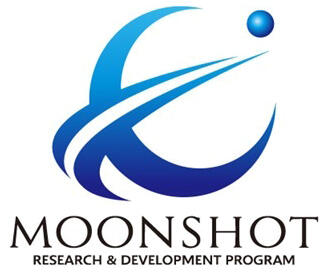The Ministry of Education, Culture, Sports, Science and Technology (MEXT) has decided to include challenging research topics related to nuclear fusion in the list of new goals for the Moonshot Research and Development Program. Although it is still far from practical application, early realization of fusion technology, which is expected to transform society, is planned through the exploration of innovative ideas, extensive learning based on trial and error and promotion of various research and development efforts.

Research and development initiatives are being advanced across multiple countries to develop the international thermonuclear experimental reactor (ITER), which is currently under construction, the next prototype reactor (to be operational by 2050), and a commercial reactor. This is because tokamak type reactors are well adapted for providing stable electricity supplies to large power grids. Meanwhile, two out of three global nuclear fusion startups are developing innovative confinement methods (different from the tokamak, helical and laser types), as well as disruptive elemental technologies, and are aiming at their innovative social deployment, with the first transmission expected before or in 2035.
Six facilities employing innovative confinement techniques are currently operating in Japan, and the disruptive elemental technologies are expected to contribute toward the downsizing and upgrading of tokamak-type commercial reactors. Furthermore, if the application prospects of these technologies in terms of social deployment are expanded beyond power generation, a new social evolution can be expected.
The new Moonshot goal aims to create a non-exhaustible 'Sun on the Earth' and realize a dynamic society free from energy resource constraints and greenhouse gas emissions.
Deuterium extracted from seawater can be employed as an energy source, and the emitted carbon dioxide can be converted into useful products without considering electricity consumption, thus leading to the realization of a carbon neutral society without restrictions on human activities. In addition, geopolitics will be shifted from being one based on resource reserves to being based on intelligence.
The following goals are planned to be achieved by 2035: demonstrations of innovative confinement techniques for early realizations of nuclear fusion energy, demonstrations of innovative applications of nuclear fusion energy for social deployment (e.g., proof-of-principle of technologies with potential for new developments, such as portable devices and space propulsion systems), and realization of multifaceted applications of fundamental innovative technologies enabling humans to take on challenges while simultaneously building industrial infrastructure. These efforts are expected to lead to the development of the following technologies: medical and environmental technologies using particles produced by nuclear fusion reactions, applications of high-temperature superconductivity technology to superconducting motors and generators for aircraft propulsion, applications of the materials and structures of high-heat removal devices (divertors) in space and rockets, applications of fabrication technologies to aircraft manufacturing, and so on.
Executive Member Hiromichi Shinohara of the Council for Science, Technology and Innovation (CSTI) (Executive Advisor to NTT) stated, "Technical contributions of nuclear fusion energy are toward prototype reactors and commercial reactors, and also toward applications different from power generation, which is why program directors must possess adequate capabilities to manage a project with a balanced and broad perspective, as well as flexibly decide when emphasis would have to be shifted even in the midst of the project."
Executive Member Mutsuko Hatano of CSTI (Professor of the Department of Electrical and Electronic Engineering in the School of Engineering at Tokyo Institute of Technology (Tokyo Tech)) added, "In terms of the technological safety of nuclear fusion, the achievement of zero risks is not possible, and because reactors are fueled with considerable amounts of tritium, it is essential to explain not only benefits but also all involved risks."
This article has been translated by JST with permission from The Science News Ltd. (https://sci-news.co.jp/). Unauthorized reproduction of the article and photographs is prohibited.




